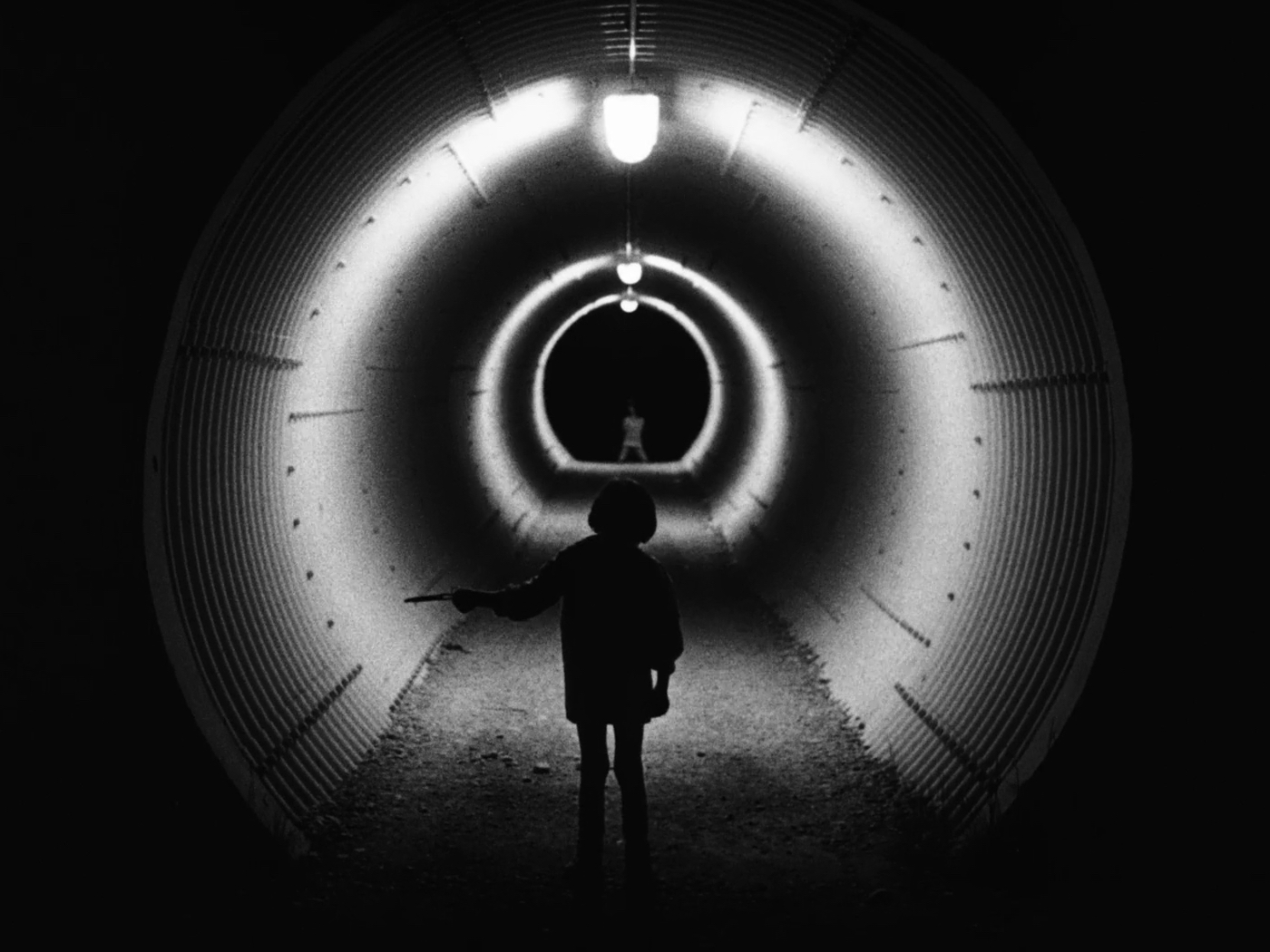
A 4-year-old child is the element from and around which the action develops, and brings sentiments and emotions to light. The French word “révélateur” describes the procedure to develop or “reveal” film negatives.
EN
“The cinema must never be the place where the viewer feels pleasure. Yet this is what the cinema tends to do in the capitalist system. The film must absolutely disturb: if it has a function, it should fall like a rock in the water, in the theatre where the bourgeois come to nest. It must be intolerable for the viewers.”
Philippe Garrel1
“Le révélateur is a deliberately dreamlike film that turns round what psychoanalysis calls the "primal scene": how is a film born? How is a baby made? The first time a child sees its parents making love. It's "a silent" lasting an hour, in black and white, shot with derisory means, showing a little boy battling with his parents (Bernadette Lafont and Laurent Terzieff). All three move about in a space marked out with the representations of the dream (a staircase, a road, a forest...), and as I had had to settle for lighting with a torch, the highly contrasted blacks and whites that violently share the screen contribute to producing an impression of unreality.”
Philippe Garrel in conversation with Thomas Lescure2
“Garrel shot Le révélateur during May ’68. Sensing hopelessness with the student uprising, he retreated to Germany with a small cast and crew. He had met the actors Bernadette Lafont and Laurent Terzieff in April at the festival in Hyères. The German Black Forest of 1968 evokes wartime (some shots are obviously meant to evoke battlefields), yet the real conflict is one of generations. While the adults try to find balance after the war with Germany, the child proclaims a silent war of independence. The boy is naïve and innocent yet violently demonstrates against the nuclear family, finally finding freedom only in solitude and contemplation. At the same time, the child projects his fantasies and directs the camera, controlling the mise-en-scène and holding the key to its secret meanings. The title of Le révélateur refers to this child. The word in French means “revealer” but also “developer” – the chemical substance used in photography to reveal the latent photographic image in the emulsion.
The film is silent, returning cinema to its roots as a silent art. Langlois insisted on projecting classic films without subtitles or intertitles, to concentrate on cinema as a visual artform. After the talkfest of May ’68, Le révélateur refuses to speak.
Garrel avoided making his cinema spectacular. He did not cater to an audience. In fact he preferred his films to be disturbing for them. He did not necessarily want to tell stories. He did not want his characters to signify or symbolize a class or an ideal. His work consisted of finding a place and a time and treating it as the center of the world for his cast and crew; the excitement of the camera running would do the rest. Garrel preferred shooting long takes that made up the building blocks of his films. He avoided editing; his shots fit into a logical intuitive continuity. He did not write screenplays. He would pick up a camera for three days or a week, the time it took to shoot a new film. The film was finished when it was finished.”
Pip Chodorov3
“Upon first watching Le révélateur, I suddenly, for a reason I could not quite comprehend, recalled Michael Herr’s claim that ‘Vietnam was what we had instead of happy childhoods’. It took Stephane Delorme’s splendid essay to make me understand how the entire sequence in which the family crosses a field was structured as a war film pastiche, with Garrel’s camerawork imitating that found in combat documentaries. This is only one of Le révélateur‘s several filmic references – the opening parodies Now, Voyager (Irving Rapper, 1942), while the end recalls Les quatre cents coups (François Truffaut, 1959). But if Garrel, like Vigo (who had the most sympathetic of Zéro de conduite’s teachers imitate Chaplin), suggests that the silent cinema (evoked here by the absence of sound and the iris-in) is literally cinema’s childhood (‘the birth of a film, the birth of a child’), he also uses cinematic reference as a means of referring ever further outward to that culture in which the war film plays an ideological role. The history of Garrel’s pre-adolescence (a history which is also ours) merges with the history of his chosen medium, and the neuroses that led to My Lai are located in the insecurities of a ‘normal’ family. To paraphrase Michael Herr: unhappy childhoods were what we had instead of Vietnam.”
Brad Stevens4
- 1Philippe Garrel, “Cerclé sous vide,” Cahiers du Cinéma, nr. 204 (1968).
- 2Philippe Garrel et Thomas Lescure, Une caméra à la place du cœur (Aix En Provence: Editions Admiranda/Institut de l’image, 1992).
- 3Pip Chodorov, “Le Révelateur: Philippe Garrel, May ’68 and the Zanzibar group,” Senses of Cinema, nr. 76 (2015).
- 4Brad Stevens, Le Revelateur and The Grandmother, Senses of Cinema, nr. 6 (2000).

